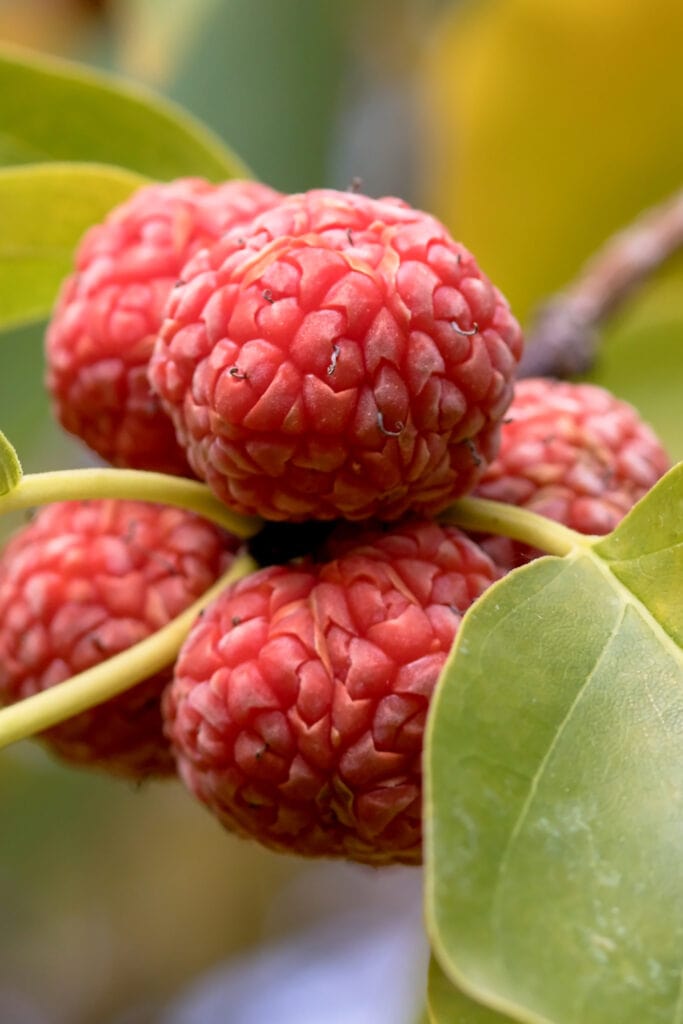When it comes to fruits that start with Z, the list isn’t very long.
‘Z’ is always one of the most challenging letters to try to play the alphabet game with, and it doesn’t get any easier when you’re listing food.
Surprisingly enough, I was able to find enough for a perfect 10-item list. Have you tried any of these fruits that aren’t the zucchini?

1. Zucchini
When I first learned that zucchinis are fruits, I was shocked, but they are.
So are squash, cucumbers, eggplants, and several other foods that people traditionally think of as veggies.
They may taste like veggies, and you may cook them like veggies, but zucchinis are definitely fruits.

2. Zwetschge
Also known as prune plums, zwetschgen are popular in Europe.
You can eat them raw, but because they hold their shape so well, people use them more often to make tarts and other desserts.
They’re sweet and slightly tart, smaller than most “traditional” plums, and have a more elliptical shape.
As a result, they look more like oversized black grapes than plums.

3. Zhe Fruit
Zhe fruit has lots of names, including che fruit, Mandarin melon berry, and cudrang.
It looks a bit like a raspberry, but the individual segments are less rounded and more geometrical.
My niece says it looks like a tiny brain growing on a tree, which isn’t all that appetizing… unless you’re a zombie, of course.
Luckily, they’re redder than brains when fully ripe.
You can eat them raw or use them in the same ways you’d use mulberries or figs.
4. Zig Zag Vine Fruit
Zig zag fruit isn’t a fruit that’s found readily all over the world, so a lot of people have never heard of it.
However, for those who live in Australia, it’s a prevalent fruit.
Zig zag fruits are berries. They’re about the size of blueberries, and they’re bright orange.
The flesh of the berries is edible, and some people do enjoy them raw, claiming they taste a bit like orange sherbert, only spicier.
Most people, though, cook with the berries or use them to make an Australian sweet liqueur.

5. Zinfandel Grapes
Zinfandel grapes are a variety of black grapes that grow in large, heavy clusters.
They’re much smaller than the grapes you find in the grocery store’s produce section, but they’re just as tasty.
You can eat them raw, but most people use them to make the famous zinfandel wines, as you might have guessed from the name.

6. Ziziphus Fruit
Ziziphus fruits aren’t common in North America or Europe either under this name or the more recognizable “jujube fruit.”
However, they’ve been a staple in Asian fare for hundreds of years.
There are three main varieties of Ziziphus fruit, and all are edible.
The Chinese people also use them for their medicinal properties, and they’re reputed to have a soothing effect on the nerves.
You can eat them raw as long as you catch them before they get too ripe. Once they fully ripen, they dry out.
At that point, they taste better if you dehydrate them.
7. Zalzalak
Zalzalak fruits are native to Iran, and they look like red persimmons or red versions of the black sapote.
The only difference is that they’re shaped more like an oval than a circle.
They taste both sweet and sour, and they, too, have numerous health benefits.
For example, people eat them to prevent heart disease. They’re also high in antioxidants.

8. Zarzamora
I love the word “zarzamora.” Maybe it’s because it sounds a bit like “Zsa Zsa Gabor,” but the word just sounds so classy and elegant to me.
Believe it or not, you’ve probably eaten zarzamora.
It’s the Spanish word for “blackberry.”
If you’ve ever enjoyed a handful of cool, refreshing blackberries with their slightly crunchy seeds or indulged in a blackberry cobbler, you’ve had zarzamora.
9. Zwangtah/Zongchak
This is another fruit with tons of names.
So if you’ve never heard of either of these, you might know them by the name “yongchak” instead.
Zongchaks are a type of legume that grows in Manipur.
They’re a desirable delicacy, and people use them for all sorts of sweet and savory recipes.
Most often, they put them in their salads to add a bit of a kick.
People eat the plant’s flowers, beans, and pods. (The pods are most people’s favorites.)
10. Zabergau Reinette Apples
Although not incredibly popular in the United States, the Zabergau Reinette apple is a favorite in its native country of Germany.
It’s a large variety of russet apple, so it’s brownish-green like most russets.
You can eat the apple raw, but it tastes much sweeter after it’s spent a month or so in cold storage.
Straight from the vine, its flavor is sharp, and the flesh is dense and hard to chew.
After spending time in storage, it grows softer and sweeter.











